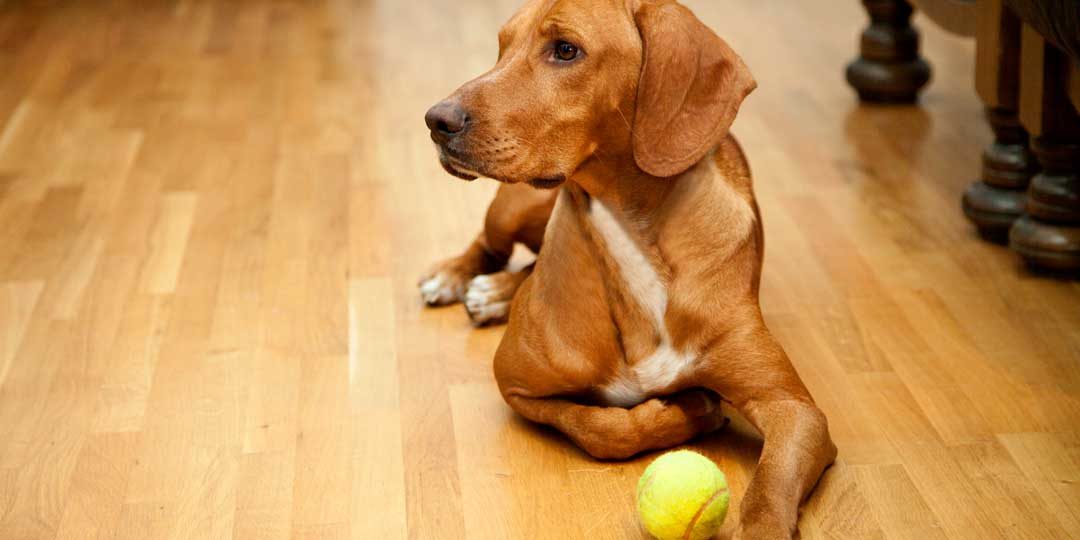1. Vinyl. Cheaper than a lot of other flooring options, vinyl is durable and long lasting, easy to clean, and largely scratch and stain resistant (though heavy spills can still cause damage, particularly if they’re not dealt with right away). Best of all, vinyl provides great traction for your pets’ feet, and is softer than wood floors, to reduce the clicking sound of their nails or claws as they walk on it.
2. Cork. Another eco-friendly flooring option, cork’s antimicrobial properties reduce the growth of mold and other contaminants that are harmful both to your pet and to you. It’s water resistant, stain resistant, and easy to clean. It can get dented by heavy objects, but it can stand up to a lot of other wear and tear, making it great for areas like hallways that get a lot of foot traffic from you and your pets, but don’t have a lot of heavy furniture to cause damage.
3. Engineered Tile. Materials like stone and ceramic tile are great for resisting scratches, spills, and all sorts of other damage, as well as being easy to clean. Unfortunately, they’re not very comfortable. The material is hard, and can be unbearably cold underfoot, particularly late at night and early in the morning, which is torture for your furry friends. However, there’s another option. Engineered tile has the same durability as stone and ceramic. Made from a mix of marble and other rock types in an epoxy base, it’s resistant to dirt and stains, scratches, spills, and more. But it’s also designed to be more comfortable underfoot, both for you and your pets. It’s more slip-resistant than ceramic, as well, and even absorbs sound, to make it quieter to walk on.
4. Laminate. Though it can give you the look of hardwood, stone, or a host of other materials, laminate is much cheaper and easier to install than they are. Its protective layer resists scratches, spills, stains, and other types of damage your pets can cause, and makes it easy to clean as well. The main drawback is that laminate can be slippery, making it difficult for your pets to move around. Go with a textured finish instead of a glossy one, to give them better traction.
With the right kind of floors in your home, and a few extra precautions, you can clean your house more easily, reduce damage, and keep it looking beautiful and new, no matter how many pets you have. Now if only you could find a way to keep them from scratching up the couch…



